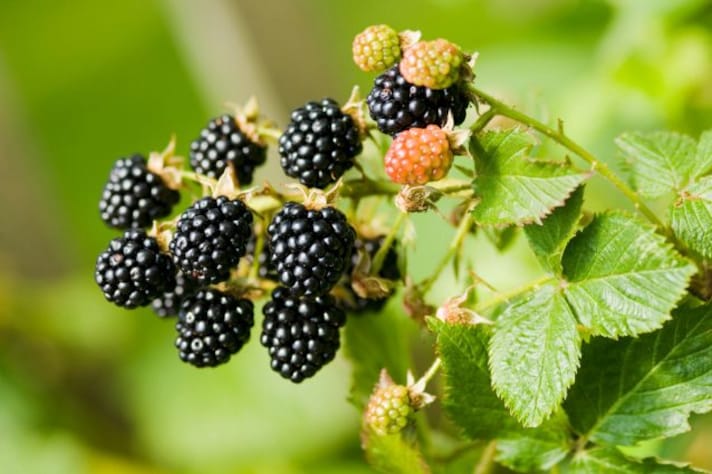Mulberries vs. Blackberries: The Key Differences and Benefits Explained
Mulberries and blackberries are often confused due to their similar appearance, but they are distinct fruits with unique characteristics. This article explores the differences between mulberries and blackberries, including their origins, nutritional benefits, and culinary uses, helping you appreciate these delicious berries in a new light.

Mulberries and blackberries are two luscious fruits that many people enjoy during the summer. Despite their similar appearance, they come from different botanical families and have distinct flavors, nutritional profiles, and uses.
Origins and Botanical Differences
Let's now dive deeper into these tiny fruits' origins and see how they differ from each other.
Mulberries
Mulberries grow on deciduous trees belonging to the Moraceae family, with the most common species being Morus nigra (black mulberry), Morus alba (white mulberry), and Morus rubra (red mulberry). Native to warm regions of Asia, Africa, and North America, mulberries thrive in temperate climates and are often found in both wild and cultivated settings.
Blackberries
Blackberries, on the other hand, are part of the Rosaceae family, which also includes raspberries and strawberries. They grow on thorny bushes or brambles and are native to Europe, North America, and Asia. Unlike mulberries, blackberries are aggregate fruits, meaning each berry is a cluster of small drupelets.

Mulberries vs. Blackberries: Nutritional Benefits
Mulberries contain just a few calories, but remain a nutrient-dense fruit with several health benefits. They are a rich source of vitamins and minerals; they contain significant levels of vitamin C, vitamin K, iron, and potassium. They are an excellent source of fiber and also contain high amounts of resveratrol, anthocyanins, and other antioxidants that combat oxidative stress.
Blackberries are equally nutritious, offering a range of health benefits. They also contain high amounts of vitamin C, vitamin K, folate, and manganese. Similarly, they are low in calories, contain fiber and are packed with anthocyanins, ellagic acid, and other antioxidants that help protect against chronic diseases.
Mulberries vs. Blackberries: Flavor and Applications
Mulberries have a sweet, slightly tart flavor and can be used in a variety of ways. You can enjoy them fresh off the tree or added to fruit salads. If dried, mulberries make a nutritious snack or can be added to trail mixes and baked goods. Other common uses include in juice,jams and varying baking treats for a burst of natural sweetness.
On the other hand, blackberries have a richer sweet-tart flavor that is versatile in many dishes. They are perfect for sauces, jams, smoothies, and baking in pies, cobblers, muffins, and cakes.
;Resize,width=767;)
;Resize,width=712;)
;Resize,width=712;)

